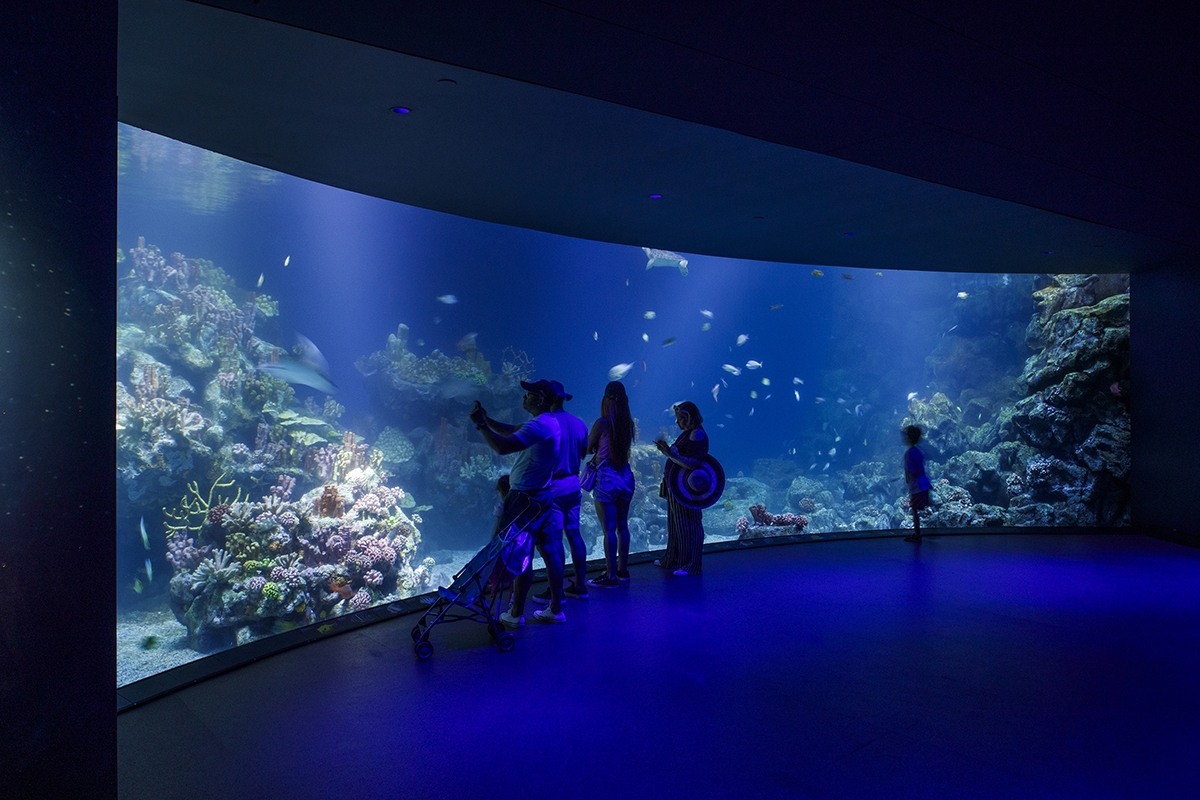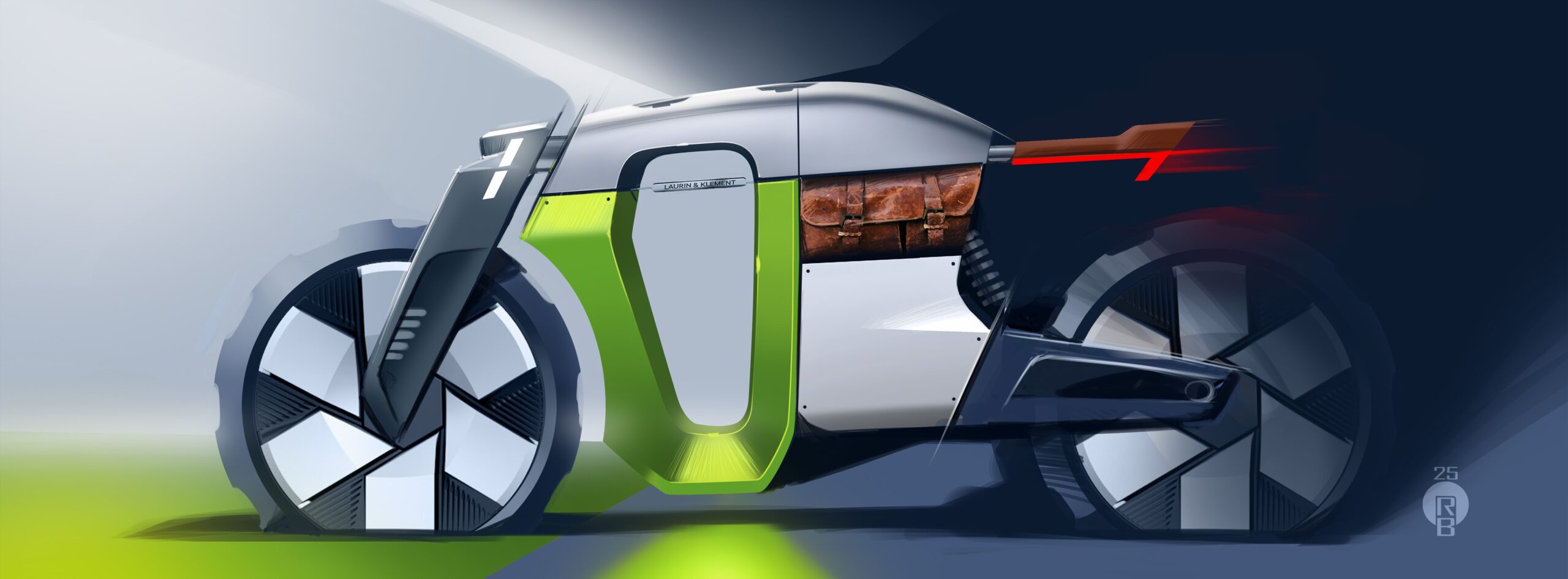Header: Courtesy of Škoda Auto
Škoda Design has recently introduced a new motorcycle design inspired by one of the brand’s earliest models: the Slavia B from 1899. Reimagined through the lens of the brand’s current design approach, known as Modern Solid, the project is part of an internal series in which designers reinterpret key vehicles from the company’s history, updating them with contemporary forms and materials.
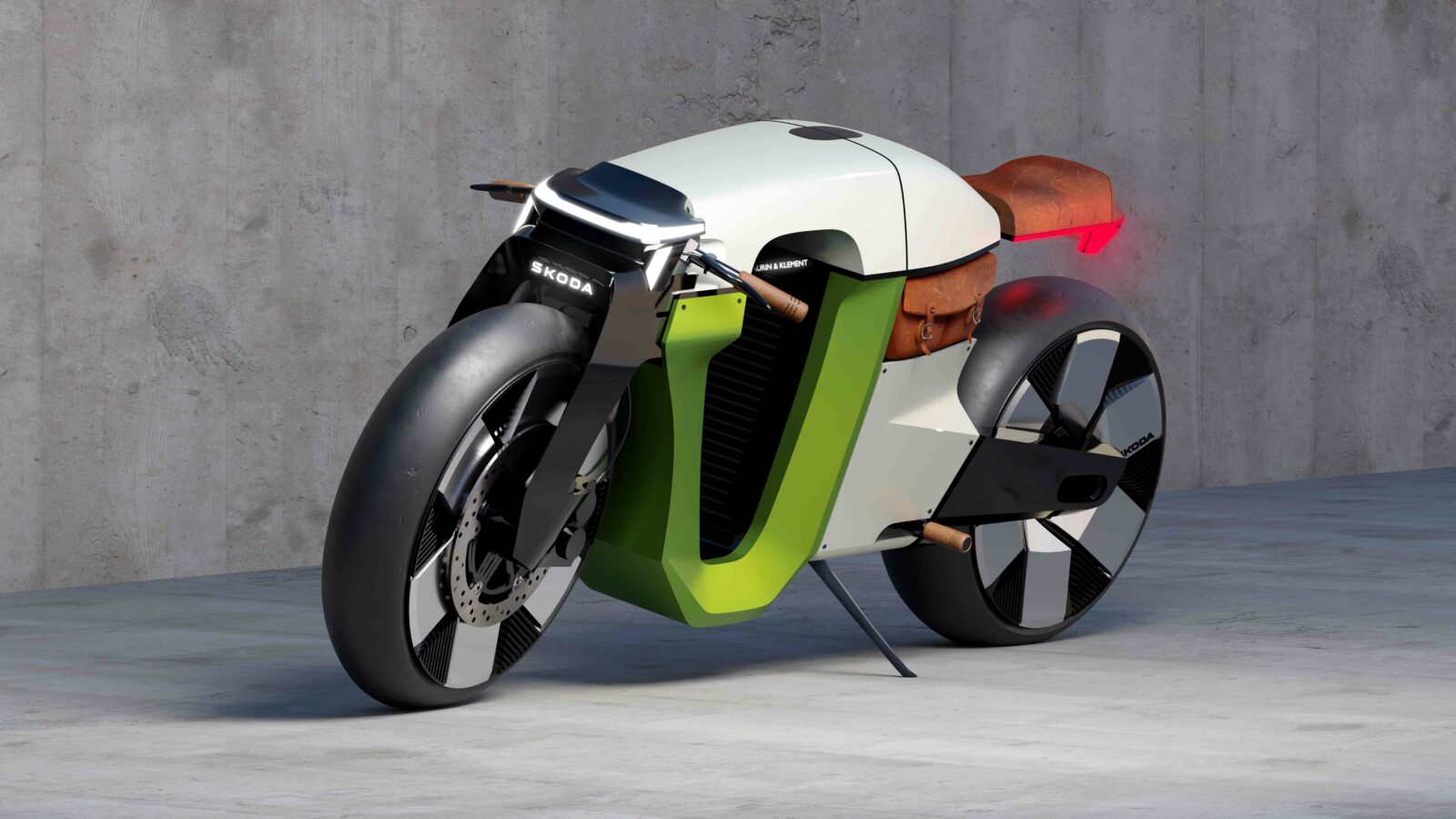

Three centuries of iconic shapes
The new design was created by French designer Romain Bucaille, who usually works on car exteriors for Škoda but took this opportunity to explore a different format. His starting point was the original Laurin & Klement Slavia B, a lightweight, single-cylinder motorcycle produced at the turn of the 20th century. While the historic version had a visible engine mounted in a curved frame, the modern style leaves the central section empty, using it instead to display a floating logo.
Bucaille explains that the form of the original Slavia B was the main inspiration behind his design, as he focused on maintaining the curved silhouette of the frame. This feature is the foundation of the new design, which simplifies the historical surface and brings it closer to Škoda’s current main design language.
To reflect the sporting legacy of the Slavia B—particularly its connection to the 1901 Paris–Berlin race, where rider Narcis Podsedníček finished as the only competitor on two wheels—Bucaille decided to add specific, old-school details. The seat, for example, appears to float above the body, and a small leather tool bag seems to pop out of the frame, referencing early long-distance riding equipment.
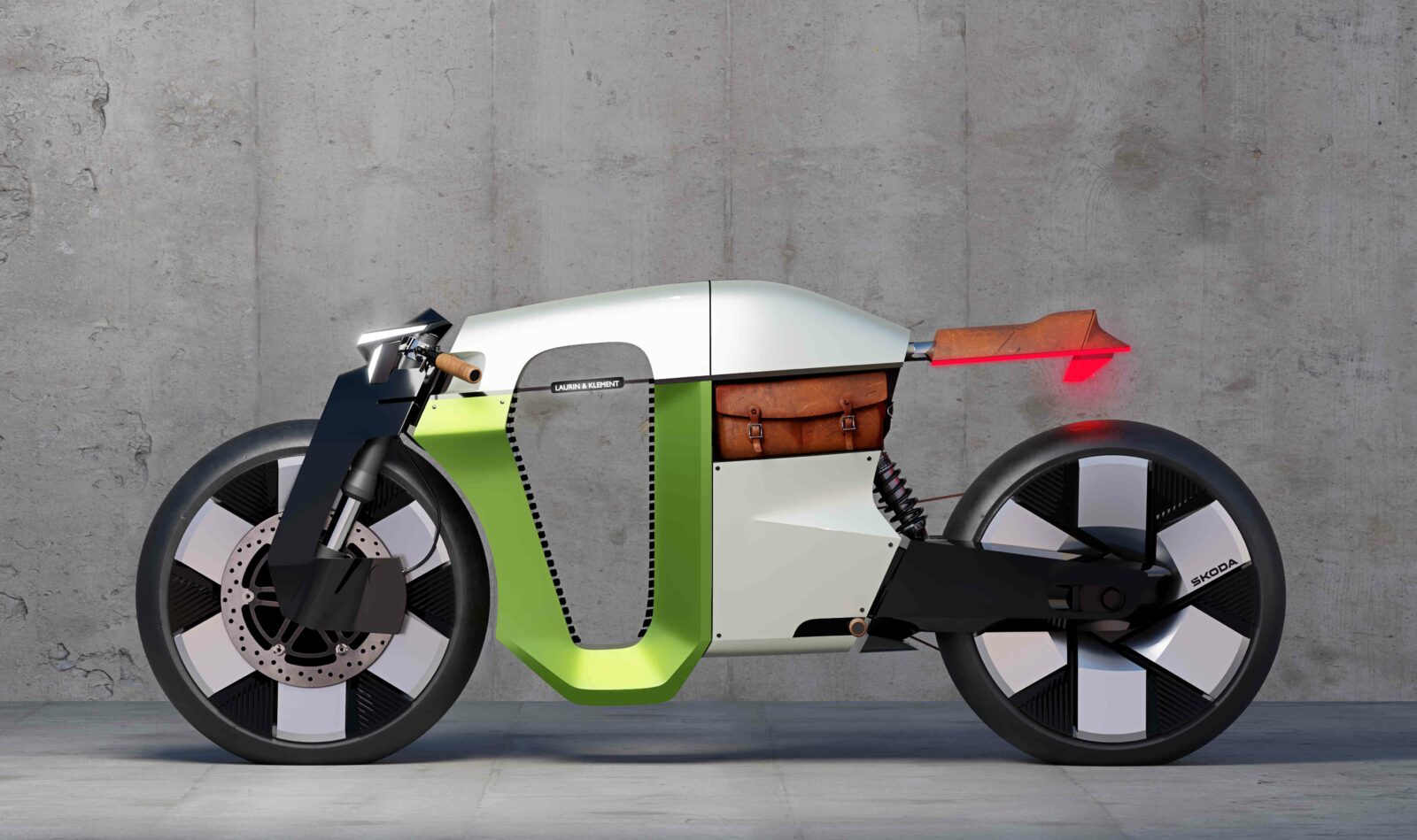
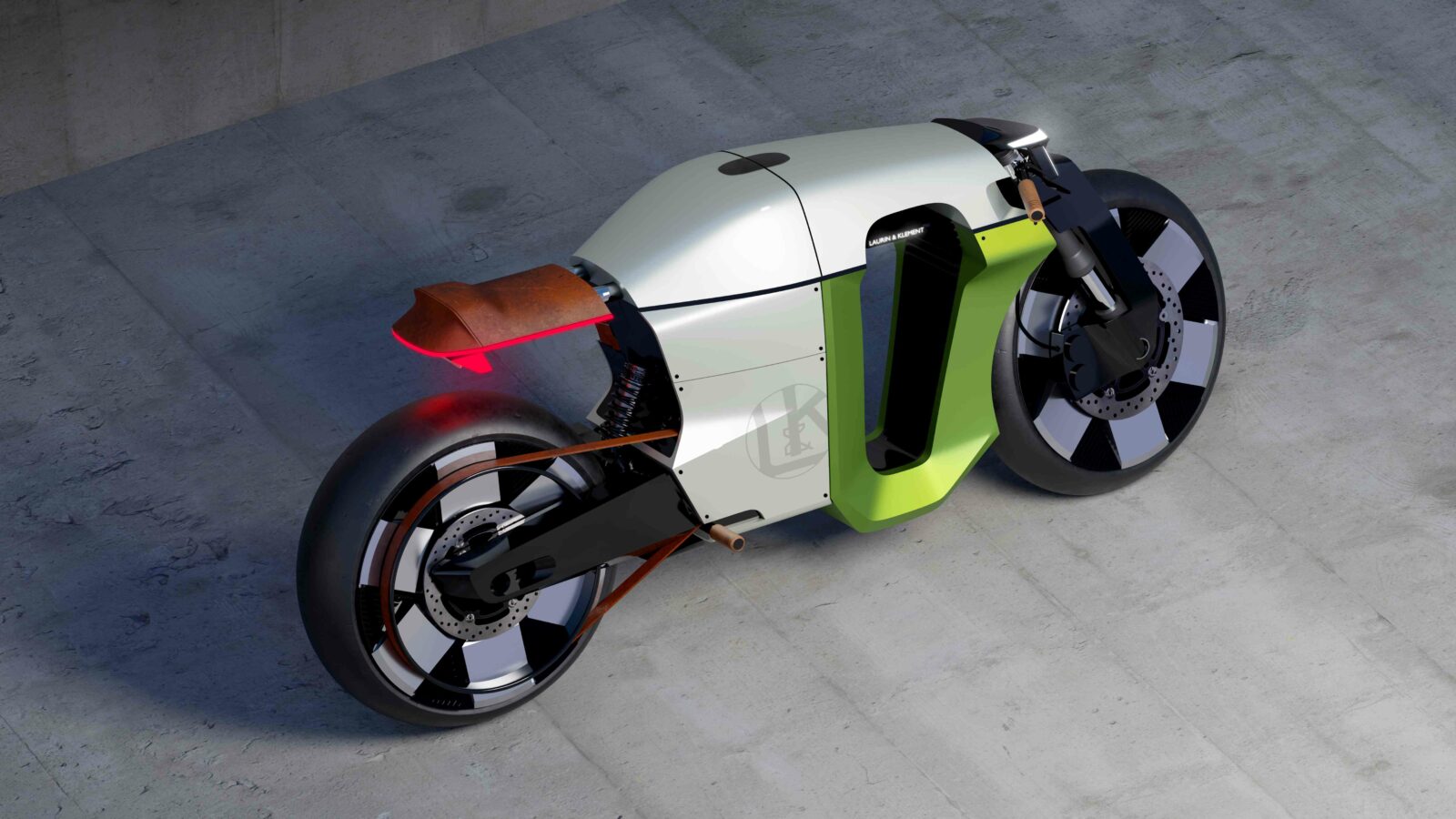
The front and back sections of the bike are divided by a strong vertical line that looks like a reference to the contrast between past and future. The headlight design, sharp edges, and overall composition align with Modern Solid design principles, prioritizing simple, geometric forms and visual clarity. For Bucaille, the result is a kind of futuristic café racer, adapted to the present-day design identity of Škoda.
To achieve a new modern style, the designer started with hand sketches, which helped him work out the proportions and establish the basic layout. After several versions on paper, Bucaille moved to digital tools, creating multiple versions of the design before choosing and perfecting a final direction. The concept was then developed into a 3D model—an increasingly common step in Škoda’s internal design workflow.
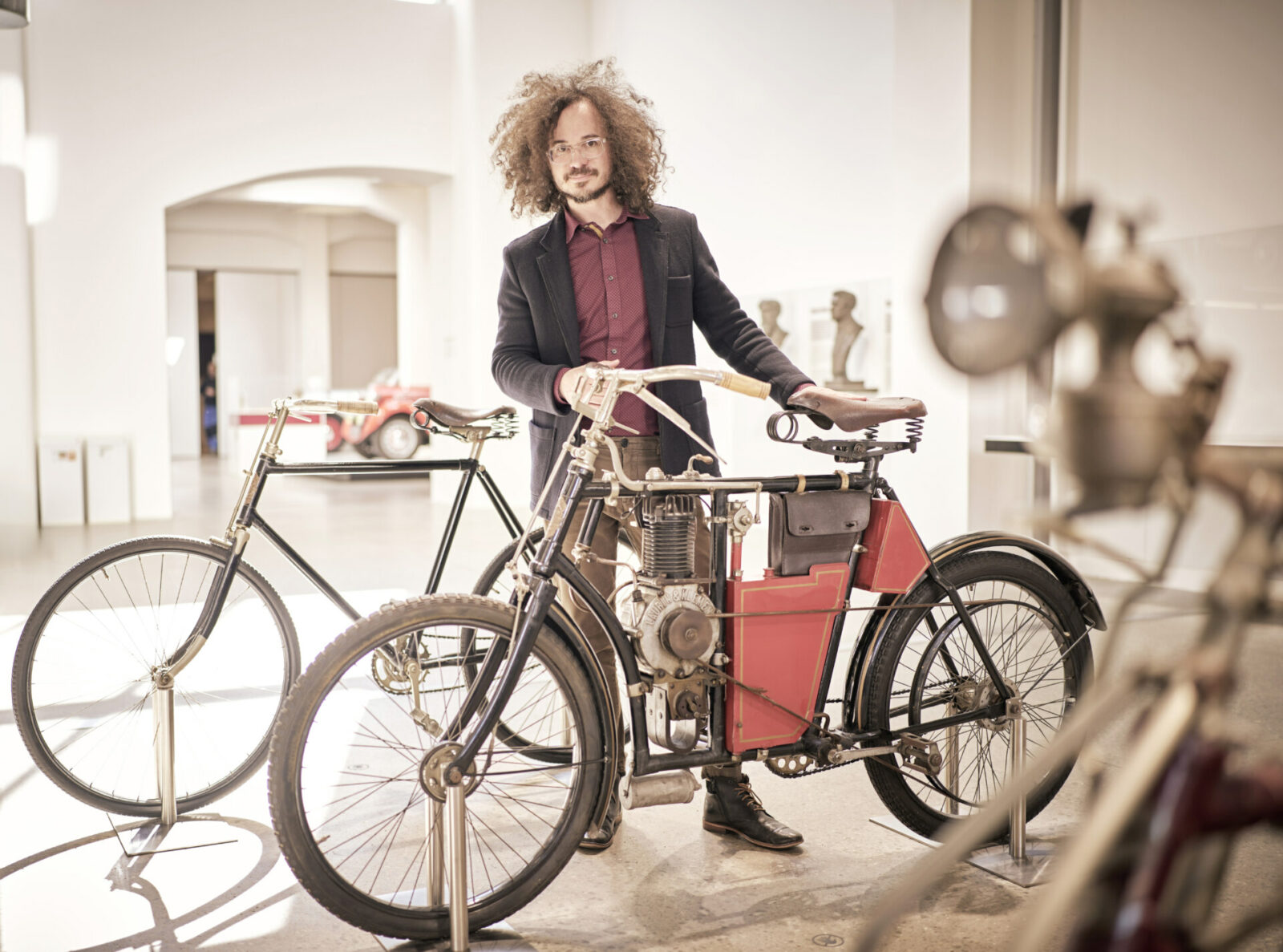
Who is Romain Bucaille?
Before joining Škoda Design in 2018, Bucaille started by studying mechanical engineering and later moved into the design field. His personal interest in cars and motorcycles dates back to childhood, shaped by early exposure to magazines, television programmes, and motorsport. This project brought together several of those long-standing interests in a single, experimental concept.
“Modern cars tend to hide their mechanical parts, but motorcycles still showcase them. I love that. And although my Slavia B lacks a combustion engine, it remains both a design masterpiece and a deeply emotional, engineering-inspired creation.”
Romain Bucaille



